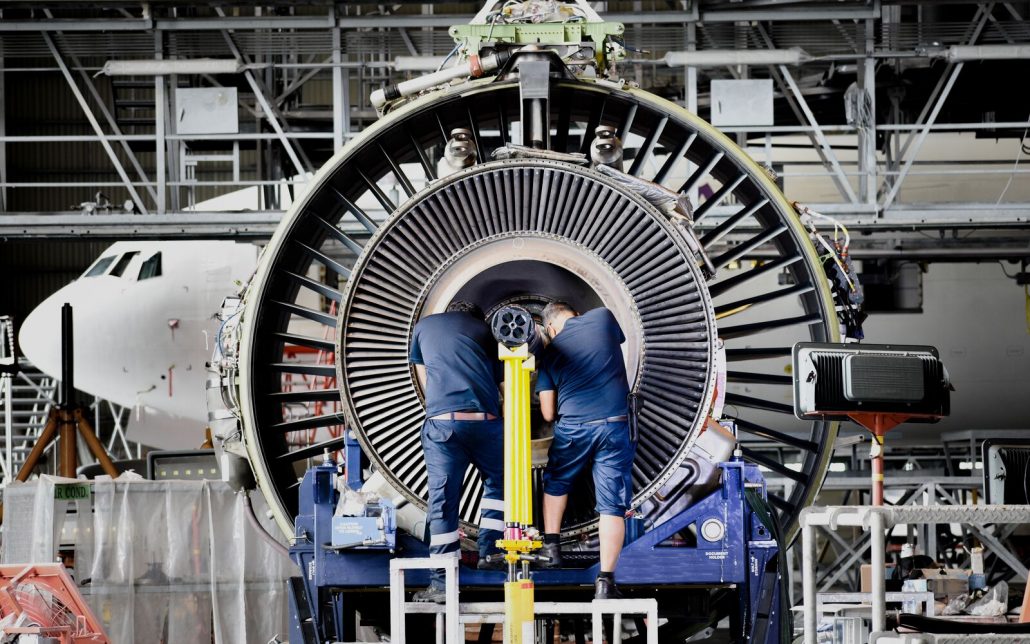
Despite strong demand for new aircraft, supply chain disruptions, labor challenges, and production delays are creating turbulence in the commercial aerospace sector.
Strong Demand Meets Production Delays
The global commercial aerospace industry remains in high demand, especially for single-aisle aircraft, yet supply chain hurdles and labor shortages are slowing down production. According to Di Reimold, Vice President of Civil Aviation for the Aerospace Industries Association, the post-pandemic recovery has exceeded expectations, particularly in air travel. Domestic flights, which rely on single-aisle planes, have seen a quicker recovery, while intercontinental travel is also steadily improving.
However, Peter Zimm, Principal at Charles Edwards Management Consulting, notes that while demand for long-haul flights (and wide-body planes) is growing, it’s still not back to pre-pandemic levels. Production backlogs are reaching historic highs, with some orders now stretching up to 10 years.
Being’s Production Woes
Boeing has been hit hardest by production delays, with a major setback following a mid-flight incident involving the 737 MAX. Senior analyst Bruce McClelland points out that this event has stalled Boeing’s delivery momentum, especially for its 737, 767, and 787 models. As a result, Boeing delivered only 175 commercial planes in the first half of 2024, compared to 266 in the same period of 2023. Boeing’s struggles are exacerbated by a machinist strike in September, halting production on its most popular aircraft.
Airbus: Struggling to Seize Market Share
While Boeing’s production issues have created an opportunity for Airbus, the European giant also faces its own challenges. Supply chain constraints, particularly for materials, components, and trained labor, have prevented Airbus from ramping up production at the desired rate. While Airbus delivered 323 aircraft in the first half of 2024, a slight increase from 316 in 2023, the growth has not been as strong as expected given Boeing’s setbacks.
The Supply Chain Bottleneck
The aerospace supply chain remains under pressure, particularly with regard to critical materials like jet engines and aerospace-grade metals. Supply chain risks have highlighted the need for robust risk management strategies. Greg Himstead, Vice President at Titanium Industries, notes that jet engine production rates are still 15-20% below required levels. The Aerospace Industries Association (AIA) is leading a U.S. Department of Transportation task force to assess supply chain resiliency, focusing on issues like workforce shortages and material availability.
Material Shortages: Titanium, Aluminum, and Steel
Materials shortages are also a major concern. Titanium, used extensively in aerospace manufacturing, remains in tight supply due to the ongoing geopolitical impact of the Ukrainian invasion, which has disrupted global titanium supply chains.
As commercial OEMs restrict titanium imports from Russia, other major mills are struggling to meet rising demand. Aluminum, on the other hand, is more abundant, although its use in single-aisle planes is growing significantly as build rates increase.
Specialty steels, including aerospace-grade stainless, have also experienced longer lead times than before the pandemic. While supply has improved in some areas, key products like vacuum-remelted steels still face extended production timelines of 30-36 weeks.
Aftermarket and Maintenance Boon
The delivery backlogs are creating a silver lining in the maintenance, repair, and overhaul (MRO) sector. With longer wait times for new aircraft, airlines are investing more in maintaining their existing fleets. This has been a boon for aftermarket suppliers and spares, with demand for replacement parts expected to remain strong as OEM production struggles to meet customer needs.
Outlook for 2024 and Beyond
Despite these challenges, the commercial aerospace market is expected to remain strong, with a healthier outlook for 2024. Both Boeing and Airbus are working to overcome supply chain issues and ramp up production. Metal suppliers are investing in new assets and hiring more workers to meet future demand, ensuring that the supply chain can eventually catch up once build rates increase.
The aerospace industry’s recovery will depend on overcoming production bottlenecks, supply chain disruptions, and labor shortages, but the long-term growth prospects remain promising, particularly with the ongoing demand for single-aisle aircraft and the shift toward more fuel-efficient, modern fleets.











Leave a Reply
You must be logged in to post a comment.